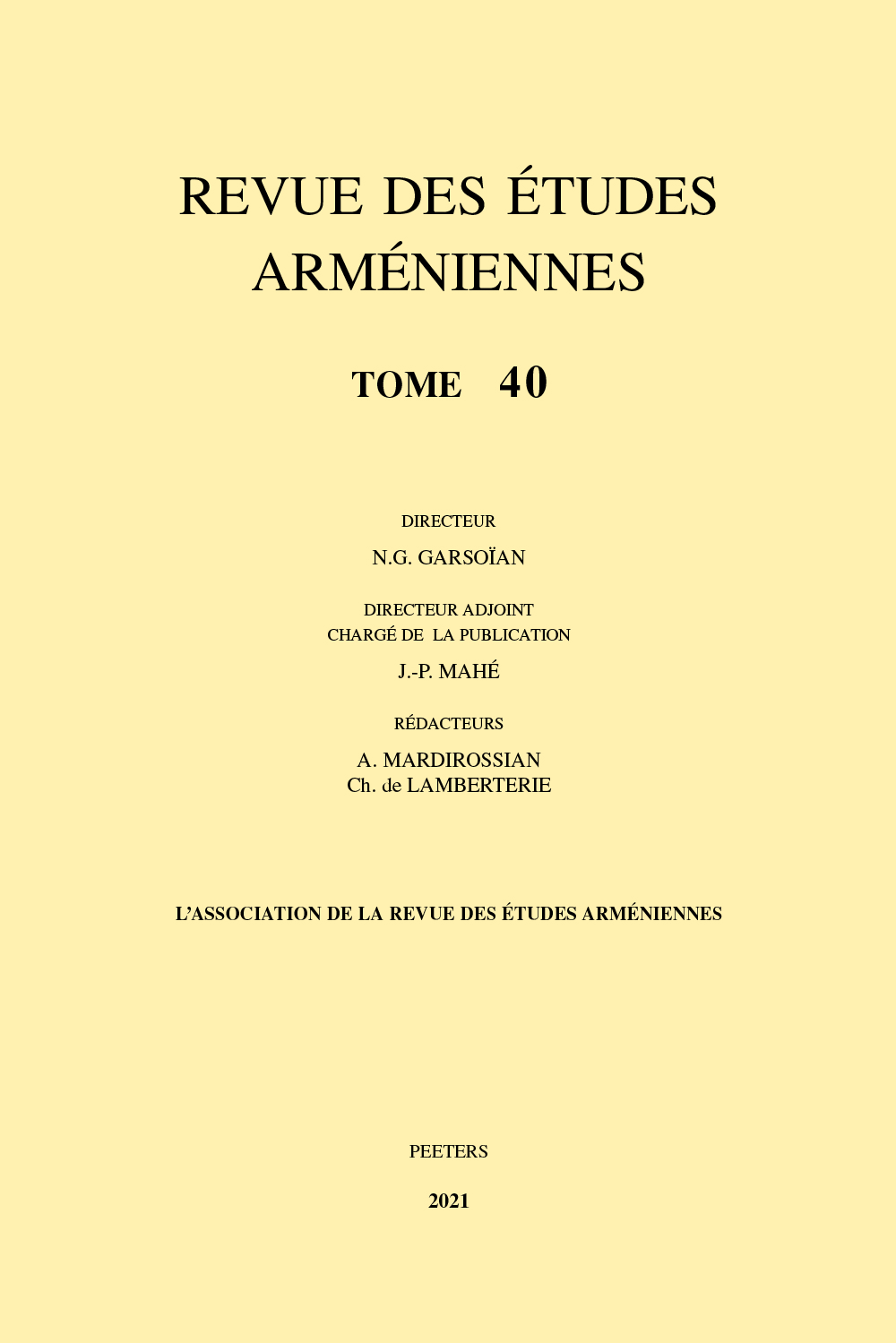 previous article in this issue previous article in this issue | next article in this issue  |

Preview first page |
Document Details : Title: The Visual Expression of Bagratuni Rulership Subtitle: Ceremonial and Portraiture Author(s): JONES, L. Journal: Revue des Études Arméniennes Volume: 28 Date: 2001-2002 Pages: 341-398 DOI: 10.2143/REA.28.0.505086 Abstract : The following pages trace the influence of Abbasid ceremonial and the evolution of a distinctly Armenian confirmation of rulership, and compare its royal message to that conveyed by Bagratuni royal imagery. This analysis utilizes both medieval texts and the surviving monuments and is divided into two sections. The first examines the textual descriptions of investitures, including the presentation of robes and regalia. The Abbasid ceremonial paradigm is characterized, and its effect on Bagratuni investiture ceremonial is demonstrated. In the discussion that follows I suggest that while Bagratuni ceremonial underwent substantial modification in response to the changing political climate, its symbolic message remained constant, emphasizing the king’s piety over his temporal power. The second section of this study compares the royal message of these ceremonials with that conveyed by royal portraits. An analysis of Bagratuni portraits surviving from the latter-half of the tenth century demonstrates that they visually convey the ideology of kingship expressed in the investitures of the first three Bagratuni kings of Armenia. The final Bagratuni portrait dates to the mideleventh century and seemingly breaks from the established conventions of royal imagery. This image raises questions regarding patronage and the traditions of royal representation among the minor branches of the Bagratuni house. |
|


